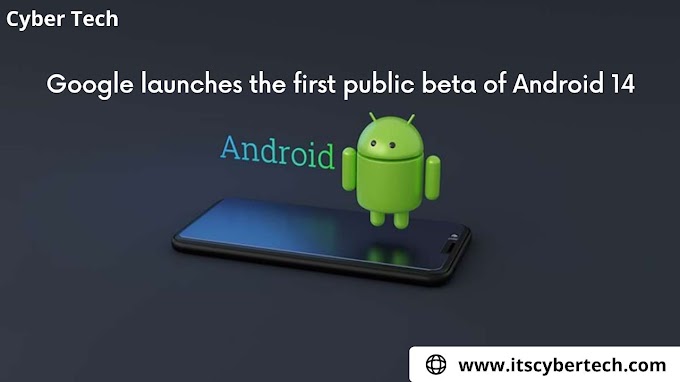Introduction:
In recent years, there has been a growing interest in integrating technology into education. Augmented Reality (AR) and Virtual Reality (VR) have emerged as powerful tools with great potential to change the way we teach and learn. This immersive technology creates a unique learning experience that engages students in ways never possible before. But what exactly is AR? What is VR? And how does this technology compare when it comes to its impact on education? In this article, we’ll explore the differences between AR and VR, their applications in education, and reveal which truly holds the title of the ultimate learning tool.
Understanding Augmented Reality (AR)
AR is an era that overlays digital facts onto actual-world environments, improving our perception and interaction with our environment. Unlike VR, which creates a wholly virtual surrounding, AR enhances fact with the aid of including digital elements to it.
One of the maximum famous examples of AR is Pokémon Go - a sport that took the arena through a hurricane in 2016. Players used their smartphones to view digital creatures superimposed onto real-global locations through their device’s camera.
Using AR in Education
1. Interactive learning: Augmented reality apps allow students to interact with 3D models of complex concepts like molecules or historical objects right from their classrooms.
2. Virtual field trips: With AR-enabled devices such as tablets or smartphones, students can explore remote locations without leaving their classrooms.
3. Language learning: Augmented reality language learning apps provide an immersive experience where students can practice listening skills by interacting with virtual characters who respond according to their conversations.
4. Accessibility: For students with disabilities who may face challenges accessing traditional learning materials, Augmented Reality provides an inclusive educational experience tailored to individual needs.
Read More like this: Staying Safe Online: The Need for Cybersecurity
Understanding Virtual Reality (VR)
Virtual Reality entails immersing customers into completely simulated surroundings via the use of headsets and other peripherals. This technology replaces the real world with a digital one, developing an entirely new fact for customers to experience.
Using VR in Education
1. Virtual labs: VR allows students to experiment in virtual labs without the need for physical equipment or security concerns.
2. Design: VR simulations can recreate high-impact scenarios such as medical emergencies or disaster scenarios, allowing students to apply their skills in a safe and controlled environment.
3. Historical Fragments: Students can step back in time and follow historical events through an immersive VR experience that brings history to life.
4. Building empathy: VR experiences can help users empathize by putting them in someone else’s shoes, allowing them to gain different perspectives and understand different cultures.
AR vs. AR VR: Which is better for education?
Both AR and VR have unique potential and applications in education, but which holds the title as the ultimate learning tool? To determine this, we need to consider various factors such as cost, availability, participation, and educational outcomes.
Cost-effectiveness
When it comes to cost, AR has an advantage over VR because it requires more investment in hardware. Most AR experiences can be achieved using smartphones or tablets with built-in cameras.
Accessibility
In phrases of accessibility, both technologies have made sizeable strides toward inclusivity. However, AR has an edge because of its compatibility with mainstream gadgets like smartphones which are more broadly to be had in comparison to excessive-cease VR headsets.
Engagement Level
Both AR and VR provide exceptionally engaging mastering experiences that captivate students’ attention by immersing them in interactive environments. However, studies have shown that the experience of presence experienced thru full immersion in virtual truth complements engagement stages substantially as compared to augmented truth.
Educational Outcomes
The goal of integrating technology into education is to improve learning outcomes. A number of studies have shown positive effects for AR and VR in terms of student engagement, knowledge retention, and increasing reflective thinking. However, the effect of VR on long-term memory has been found to be more significant than that of AR.
Read More like this: Chat GPT vs Google Bard for Programmers
FAQs
1. Q: Can AR and VR be used together in schooling?
A: Absolutely! By combining AR and VR technology, educators can create combined getting-to-know experiences that offer the high-quality of both worlds - real-global interactivity with augmented elements and complete immersion into digital environments.
2. Q: Are there any risks related to the use of AR or VR in training?
A: While the usage of AR and VR in schooling offers numerous advantages, it is critical to recall ability dangers consisting of movement illness, eye strain, or disorientation. It is essential to implement the right recommendations for safe utilization and make certain age-suitable content.
3. Q: Is there a limit to what subjects can benefit from AR or VR integration?
A: No difficulty is off-limits when it comes to integrating AR or VR into schooling. From STEM subjects like physics or biology to humanities like history or literature - all can benefit from immersive experiences that beautify expertise and engagement.
4. Q: How do teachers get hold of training on incorporating AR/VR into their school rooms?
A: Many organizations offer expert improvement packages specially designed for educators inquisitive about incorporating immersive technologies into their teaching practices. Online assets, webinars, and workshops are available for instructors seeking steering on a way to effectively combine these gear into their classrooms.
5. Q: What are a few challenges faculties may face while enforcing AR/VR technology?
A: Schools may also face challenges along with constrained budgets for purchasing important hardware/software, lack of technological infrastructure/help structures within colleges, and preliminary resistance from instructors surprised with these technologies.




